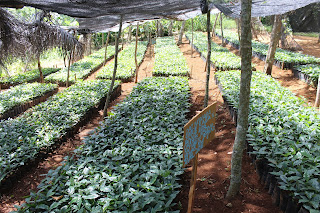Addressing the Agricultural Impact of Climate Change: Partners' Work in the Dominican Republic

This article is a contribution to a four-week blog series celebrating 30 years of USAID’s John Ogonowski and Doug Bereuter Farmer-to-Farmer (F2F) Program . Yaque del Norte watershed The Dominican Republic (DR) is one of the only countries in the Caribbean where bananas continue to be a major export. Banana production is of particular importance in Yaque del Norte, an area vital in the country's food production. However, unpredictable weather patterns such as more frequent droughts, floods, and extreme weather have caused concern over the reduced quantity of available water. Poor agricultural practices including land-clearing, over-fertilization, and poor waste management also threaten the quality of water in the Yaque del Norte watershed - which is also the main source of potable water for several communities. Partners of the Americas’ Farmer-to-Farmer (F2F) program in the DR is working to protect the Yaque del Norte watershed through climate-smart agricultural technologies...



